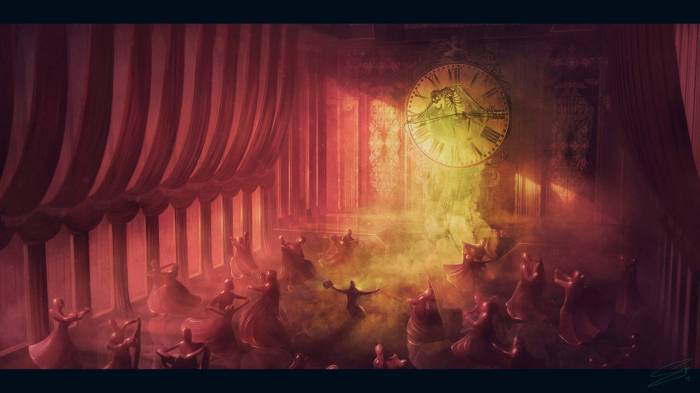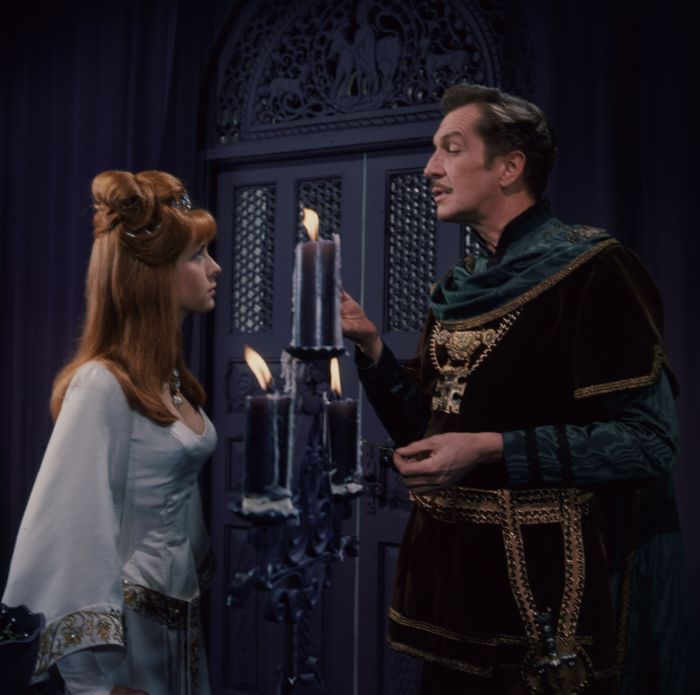The mood of the Masque of the Red Death is a central element in Edgar Allan Poe’s classic tale. This haunting and atmospheric story unfolds in a setting of impending doom and despair, where the characters are consumed by a sense of dread and foreboding.
Poe’s skillful use of imagery, symbolism, and characterization creates a palpable sense of unease and terror. The story’s psychological and philosophical themes add depth to the narrative, exploring the nature of death, the human condition, and the inevitability of fate.
Literary Elements: Mood Of The Masque Of The Red Death

The setting and atmosphere of the masque are crucial in establishing its mood of foreboding and dread. The isolated abbey, with its “dim, vaulted” chambers and “lofty walls,” creates a sense of claustrophobia and isolation.
The author uses vivid imagery and symbolism to enhance the atmosphere of the masque. The “blood-red” windows and the “life-like” figures of the clock symbolize the impending doom and the passage of time.
The characters also play a significant role in shaping the mood of the story. Prince Prospero’s arrogant disregard for death and his guests’ desperate attempts to escape their fate create a sense of tension and unease.
Psychological and Emotional Aspects

Prince Prospero’s psychological state is central to the mood of the masque. His denial of death and his attempt to escape it through the masque reflect his own mortality and fear of the unknown.
The guests experience a range of emotions, from fear and anxiety to despair and resignation. Their reactions to the Red Death’s arrival reveal the human condition’s fragility and the inevitability of death.
The Red Death itself symbolizes the characters’ fears and anxieties. Its appearance at the masquerade signifies the inevitability of death and the futility of trying to escape it.
Social and Cultural Context

The story’s social and cultural context influences the mood of the masque. The wealthy elite’s isolation from the outside world and their lavish lifestyle reflect the social tensions and anxieties of the time.
The masque can be seen as a metaphor for the societal decay and moral decline of the upper classes. Their preoccupation with pleasure and their disregard for the suffering of others foreshadow their own downfall.
Philosophical Implications

The story explores philosophical themes related to the nature of death and its inevitability. Prince Prospero’s futile attempt to escape death raises questions about the human condition and the limits of human power.
The story also examines the psychological and emotional impact of death on individuals and society. The guests’ reactions to the Red Death reveal the human psyche’s fragility and the importance of facing mortality with courage and acceptance.
General Inquiries
What is the significance of the setting in establishing the mood of the Masque of the Red Death?
The setting of the story, an isolated abbey during a plague, creates a sense of claustrophobia and entrapment. The abbey’s decaying architecture and gloomy atmosphere reflect the characters’ inner turmoil and the impending doom that hangs over them.
How does Poe use imagery and symbolism to create a sense of foreboding and dread?
Poe uses vivid imagery and symbolism to evoke a sense of unease and terror. The “Red Death” itself is a symbol of the inevitability of death, while the seven rooms of the abbey represent the different stages of life. The ebony clock, which chimes every hour, serves as a constant reminder of the passage of time and the approach of death.
What is the role of the characters in shaping the overall mood of the story?
The characters in the story are all flawed and imperfect, and their actions contribute to the overall sense of doom and despair. Prince Prospero’s arrogance and denial of death lead to his downfall, while the guests at the masquerade are consumed by their own vanity and self-indulgence.